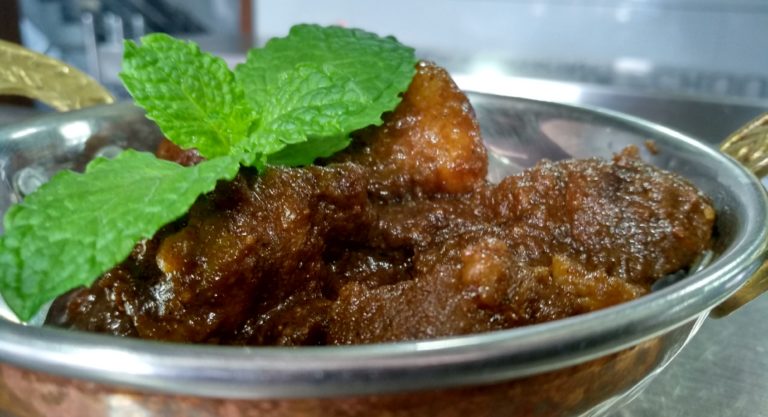Vindaloo is a tongue-singing curry, yet it wasn’t generally that way. The word vindaloo is a distorted elocution of the well-known Portuguese dish Carne de vinha d’alhos (meat marinated in wine-vinegar and garlic), which advanced toward India in the fifteenth century alongside Portuguese pilgrims. The dish was changed to nearby conditions: There was no wine-vinegar in India, so Franciscan ministers aged their very own from palm wine. Local ingredients like tamarind, black pepper, cinnamon, and cardamom were likewise fused. However, the most vital expansion – chile peppers – was an inheritance of Portugal’s worldwide domain, imported to India from the Americas. At the point when the British occupied India from 1797 to 1813, they were charmed to find this East-meets-West nourishment, just as Christian Goan cooks, who, free of position and religious limitations, were cheerful to make beef and pork dishes adored by expats.
Preceding this, long pepper which developed bounteously in the woodlands of Western Ghats and Malabar had been utilized to deliver hot meat arrangements. It came as a preserved meat eaten by Portuguese mariners amid long voyages. Boats would pack wooden barrels with exchanging layers of a meat, typically pork, and garlic, all absorbed wine.
The Portuguese took their preserved meat with them to the Goa area of India sooner or later after Vasco de Gama first touched base in the nation in 1498. The Goan individuals absorbed numerous Portuguese culinary developments into their own customs, and vindaloo was one of them. It was the Goans who included a significant number of the flavours we partner with vindaloo to the formula, including chilies, ginger, coriander, and cumin.
The recent vindaloo is far expelled from its soonest roots, for the most part mirroring the commitments of the Goans. Further, however conventional vindaloo has not generally included potatoes, most current dishes do; this is based on a misconception based on the fact that the Hindi word “aloo” translates to potato.
Customarily vindaloo was solely for pork meat however at this point you can discover chicken, lamb, fish and veggie lover forms also. The East Indian form of this astonishing dish is called as tindaloo, which is bit spicier than vindaloo.
From Medeira, the Vindaloo formula ventured out to different nations when Portuguese boats to South and Central America ceased by. In America it came to be known as Vinyoo Dalyge. Later in South America, paprika and oregano was included with the first formula.
Today ‘Vindaloo’ is a standout amongst the most mainstream Indian dishes outside India. Visit any Indian eatery in Europe and the odds are that you will discover vindaloo on the menu. Such is the ubiquity of the dish that at the 1998 world cup football, the unofficial football anthem of the English football team fans was, ‘Vindaloo-vindaloo-vindaloo’, we are gonna score one more than you.
To listen to the song click the link – https://www.youtube.com/watch?reload=9&v=KaBdajHOsSM

